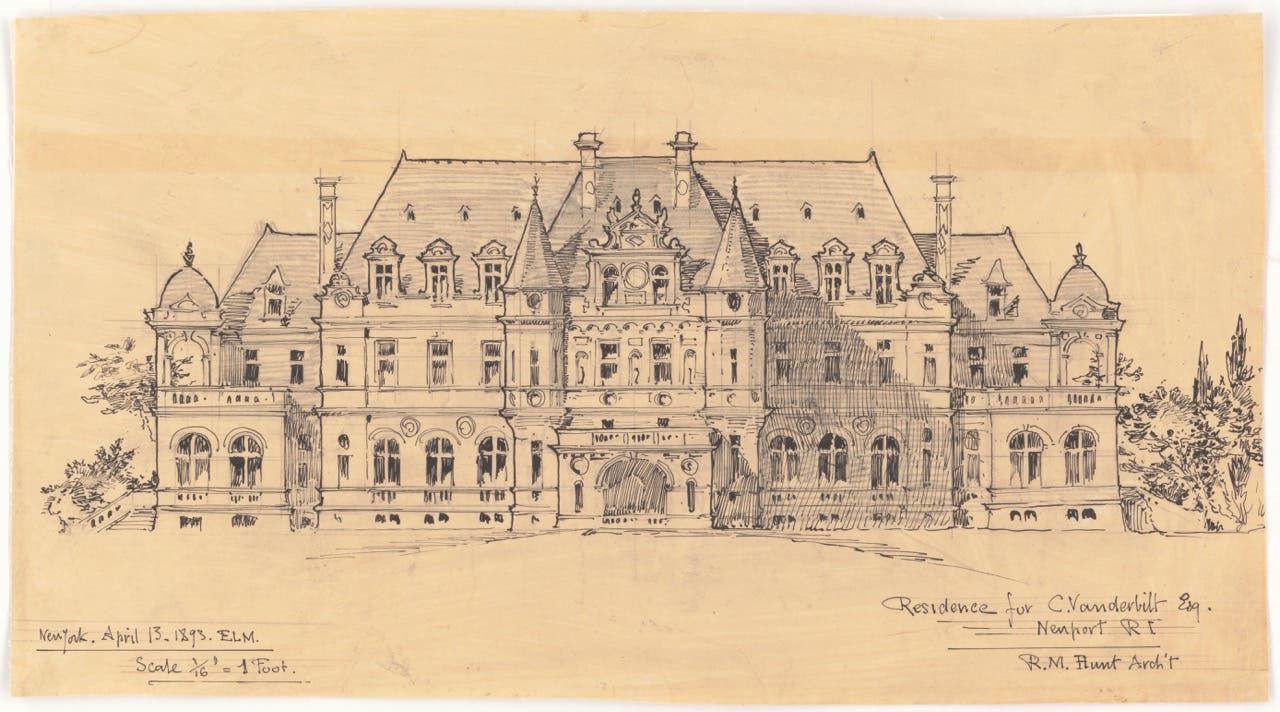
Features
Book Review: Robert A.M. Stern Buildings and Projects 2004-2009
Robert A. M. Stern: Buildings and Projects 2004-2009
edited by Peter Morris Dixon, with a foreword conversation between Paul Goldberger and Robert A. M. Stern
The Monacelli Press, New York, NY; 2009
624 pp; hardcover; more than 1,200 full-color images; $75
ISBN 978-1-58093-234-9
Reviewed by Clem Labine
For 40 years, the work of Robert A. M. Stern has alternately confounded and infuriated critics in the architectural establishment. Although an architect of unquestioned talent, Stern is not an avowed Modernist and thus commentators who view themselves as avant-garde have tried to put Stern down as "a theme park designer," throwing around terms like "retro," "old fashioned" and "historical pastiche" in an attempt to marginalize his work. Detractors point to what they see as a failure to produce flamboyant "memorable icons of modern architecture" like Frank Gehry or Daniel Libeskind.
But Stern – and this reviewer – denies that producing radical stand-alone sculpture-buildings is the sole criterion for judging great architecture. Stern has set himself a different goal: to produce appropriate architecture – buildings that are at home in their settings, and which enrich both their surroundings and the experience of the people who actually use the buildings. To do this, Stern has engaged in a long-standing dialogue with historic architecture – continually energized by the forms and themes of traditional design, but always altering and adapting them in ways that create something new and contemporary. Andrea Palladio similarly used ancient Roman buildings as the inspiration for a new and modern architecture of his time – and no critic today taxes Palladio with churning out "historical pastiche."
To anyone who doubts that Robert A.M. Stern is a giant of the contemporary American architectural scene, let him or her browse the pages of this latest monograph documenting the output of Stern's office during the last six years. The most jaundiced critic cannot help but be impressed by the exuberant virtuosity of the work: Projects vary in size from a small boathouse to soaring skyscrapers. The range of building typologies includes residences, libraries, courthouses, hotels, apartment buildings, university buildings, medical facilities, schools, cultural centers, business complexes, townhouses, civic centers, office towers and more.
And these building types are rendered with equal skill in a dazzling array of styles: Georgian, Classical, Shingle Style, Arts & Crafts, Mediterranean, Modernist – and many other variations on traditional motifs that are interpreted with unique Sternian flair. No other architectural firm in the U.S. can match the range and quantity of building types and styling that Stern's office has handled at a consistently high level of quality.
A Mighty Tome
This monograph, the fifth since Stern opened his practice in 1969, is a large format (8½ x 11), weighty tome (9 lb.) that delivers 624 pages of plans and beautifully photographed architectural projects – 128 in all (not counting 80 other projects noted briefly in an appendix). The pages encompass a veritable encyclopedia of elegantly composed and detailed designs, from refined high-end homes to the 58-story tapering glass obelisk of the Comcast Center in Philadelphia.
Although the monograph demonstrates a master's touch with a wide range of building types, Stern's office does seem to have developed an especially deep level of expertise with academic institutions. Work for Harvard, Yale, Hotchkiss, the University of Virginia, Georgetown, Purdue, the University of Kentucky, Brooklyn Law School, Trinity University, Taft School, Smeal College of Business and the University of Michigan is just a partial listing of the educational institutions represented. Stern's contention is that the image projected by campus buildings is a critical part of an institution's "brand," and any work that Stern does for a school is aimed at enhancing and augmenting the essential character of the campus.
A small quibble with the volume: This reviewer found himself wishing for an index to make it easier to refer back to specific projects. And because it is primarily a picture book, project descriptions are perforce rather condensed. This can be frustrating for a reader who wants to know about a particular building in greater detail.
Context-Sensitive Architecture
"Contextual" has become a favorite buzz word throughout the architectural world. As a result, no matter how bizarre and visually adversarial a design may be to its neighbors, every architect finds rationalizations to explain – in very abstract terms – how his or her building is highly "contextual."
By contrast, Robert A. M. Stern makes buildings that really ARE contextual. The viewer doesn't need a 20-minutre lecture in order to see that the buildings are harmonious with their surroundings. That's a primary reason Stern's creations vary so much in look and why he doesn't design in a single "signature style." He is a master at creating buildings that are imbued with the character of the place rather than stamped with his own ego.
Stern himself has phrased it this way: "Our firm's practice is premised on the belief that the public is entitled to buildings that do not, by their very being, threaten the aesthetic and cultural values of the buildings around them. We do not believe that any one style is appropriate to every building and every place. We do believe in the continuity of tradition and strive in our work to create order out of the often chaotic present by entering into a dialogue with the spirit of the places in which we build."
The marketplace has amply validated Stern's design philosophy. For example, during New York City's last building boom, when several other "brand name" architects were creating "iconic" apartment complexes in the city, Stern completed 15 Central Park West, the most successful residential development in New York history. Stern's building purposely recalled the warmth, luxury and comfort of New York's classic apartments of the 1920s – and in the process generated roughly $2 billion in condominium sales.
Establishment critics may continue to debate whether Stern makes "great architecture." Regardless, this new monograph proves that the architecture of Robert A.M. Stern makes great places. TB
Founder of Traditional Building, Period Homes and Old-House Journal, Clem Labine is currently editor emeritus of Traditional Building and Period Homesmagazines. He also has Board Emeritus status at the ICA&CA, where he was a founding board member and served until 2005. Labine has received many awards including The Arthur Ross Award from the Institute of Classical Architecture & Classical America.








